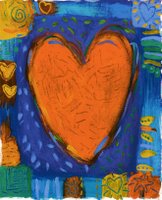- High body temperature. A body temperature of 104 F (40 C) or higher is the main sign of heatstroke.
- A lack of sweating. In heatstroke brought on by hot weather, your skin will feel hot and dry to the touch. However, in heatstroke brought on by strenuous exercise, your skin may feel moist.
- Nausea and vomiting. You may feel sick to your stomach or vomit.
- Flushed skin. Your skin may turn red as your body temperature increases.
- Rapid breathing. Your breathing may become rapid and shallow.
- Racing heart rate. Your pulse may significantly increase because heat stress places a tremendous burden on your heart to help cool your body.
- Headache. You may experience a throbbing headache.
- Confusion. You may have seizures, hallucinate, or have difficulty speaking or understanding what others are saying.
- Unconsciousness. You may pass out or fall into a state of deep unconsciousness (coma).
- Muscle cramps or weakness. Your muscles may feel tender or cramped in the early stages of heatstroke, but may later go rigid or limp.
- Heat cramps. Heat cramps are caused by initial exposure to high temperatures or physical exertion. Signs and symptoms of heat cramps usually include excess sweating, fatigue, thirst and cramps, usually in the stomach, arms or legs. This condition is common in very hot weather or with moderate to heavy physical activity. You can usually treat heat cramps by drinking water or fluids containing electrolytes (Gatorade or other sports drinks), resting and getting to a cool spot, like a shaded or air-conditioned area.
- Heat exhaustion. Heat exhaustion occurs when you don't act on the signs and symptoms of heat cramps and your condition worsens. Signs and symptoms of heat exhaustion include a headache, dizziness or lightheadedness, nausea, skin that feels cool and moist, and muscle cramps. Often with heat exhaustion, you can treat the condition yourself by following the same measures used to treat heat cramps, such as drinking cool, nonalcoholic beverages, getting into an air-conditioned area or taking a cool shower. If your symptoms persist, seek medical attention immediately.
If you think a person may be experiencing heatstroke, seek immediate medical help.
- Help the person move to a shaded location and remove excess clothing.
- Place ice packs or cold, wet towels on the person's head, neck, armpits and groin.
- Mist the person with water while a fan is blowing on him or her.
- Exposure to a hot environment. In a type of heatstroke called nonexertional heatstroke, your condition is caused by a hot environment that leads to a rise in body temperature, without strenuous physical activity. This type of heatstroke typically occurs in hot, humid weather, especially for prolonged periods. It occurs most often in older adults and in people with chronic illness.
- Strenuous activity. In a type of heatstroke called exertional heatstroke, your condition is caused by an increase in body temperature brought on by physical activity in hot weather. Anyone exercising or working in hot weather can get exertional heatstroke, but it's most likely to occur if you're not accustomed to high temperatures.
- Wearing excess clothing that prevents your sweat from evaporating easily and cooling your body
- Drinking alcohol, which can affect your body's ability to regulate your temperature
- Becoming dehydrated, because you're not drinking enough water to replenish fluids you lose through perspiration





No comments:
Post a Comment